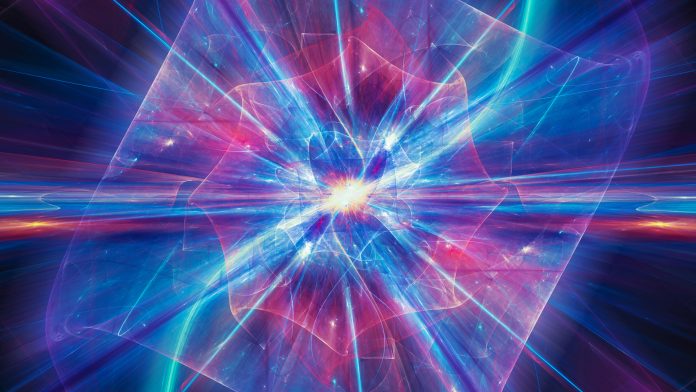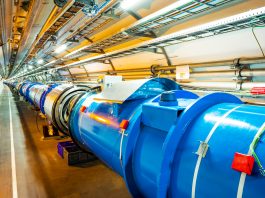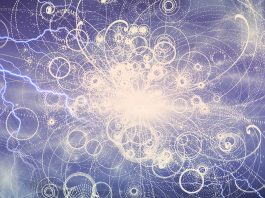Dr Giovanni Lamanna, Director of Laboratoire d’Annecy de Physique des Particules, speak to The Innovation Platform about particle detector technologies and the significance of their research.
In 10 years of operation, the Large Hadron Collider (LHC) has assured major discoveries, notably that in 2012 of the existence of the Higgs boson, the particle supposed to confer its mass to almost all the others.
On 30 March 2010, CERN, on the French-Swiss border, launched the research programme of the Large Hadron Collider (LHC), producing the first proton collisions and becoming the world’s highest energy accelerator. After a decade of operation, LHC (which takes the form of a circular ring 27km in circumference) has radically changed the face of basic research. It is within enormous international collaborations which bring together thousands of researchers, engineers and technicians of 110 different nationalities from many national laboratories and universities and who operate four gigantic detectors, that CERN’s scientific objectives are pursued (to reveal the secrets of the infinitely small and, what doing, the fundamental laws of our Universe).
CERN-LHC programme explores the nature of fundamental forces that have shaped our Universe since the beginning of time and which will determine its future, the origin of the masses and deviations from the Standard Model searching for new particles and for candidates of dark matter, understanding the asymmetry between matter and antimatter. The international high-energy particle physics (HEP) community has spent the last two years in intensive discussions that are bringing to the definition of a new European Strategy (ES) providing prioritisation to guide the direction of the field to the mid-2020s and beyond. Different paths have been proposed, among which the options of electron-positron colliders for the detailed study of the Higgs sector followed by a new collider which will enable the exploration of higher energies than the current LHC 13TeV regime. However, the upgrading phase of the high-luminosity (HL-LHC) project that will increase from 40 to 140 the number of collisions in the LHC detectors each time the two counter circulating proton beams cross each other, will be the major project in this domain at CERN for the next 10 to 20 years.
Future circular collider
LAPP, the CNRS laboratory in the French Alps, provides French scientists with a proximity national ‘gateway’ to the CERN experiments, and is one out of hundreds of research laboratories that participate in the CERN programme and in the LHC endeavour. As many others laboratories, LAPP brings its important contribution to the LHC success. LAPP has committed along three decades to the design, construction, operation and exploitation, through billions of collected collisions of ATLAS and LHCb (two of the four LHC experiments). It is engaged in the preparation of the HL-LHC phase, meanwhile committing in the conceptual study for the post-LHC scenario, the Future Circular Collider (FCC).
“The value and the role of present and future experimental research at CERN are key for the progress and the excellence of the European Research Area,” says Giovanni Lamanna. “Europe should continue to support the CERN programme and its leading role, boosting the post-LHC programme such as the next generation discovery accelerator, FCC. The starting point of such a renewed science mission in HEP is to measure the properties of the Higgs boson, specifically its self-interaction and to probe the processes defined by the Standard Model of Particle Physics in detail.” This can be best achieved in Europe with FCC-ee (Future Circular Collider electron-positron), a 100km long, underground circular highest-luminosity electron-positron collider to study the Z, W, Higgs and top particles with high precision, with samples of 5·1012 Z bosons, 108 W pairs, 106 Higgs bosons and 106 top quark pairs.
FCC-ee offers un-precedented sensitivity to signs of new physics, appearing in the form of small deviations from the Standard Model, forbidden or rare decay processes, or of production of new particles with very small couplings. New scenarios would then emerge and will then require deep exploration performed by a subsequent hadron-hadron collider (FCC-hh), an energy frontier particle accelerator that can extend the direct discovery reach by about one order of magnitude to the 100TeV range, for a science mission that lasts until the end of the century. Both civil engineering (such as the 100km long tunnel) and general technical infrastructures will be fully reused for the combined project FCC-ee followed by FCC-hh. The total cost will be about €27bn and covers a total of 70 years. “Starting from this year and for the next five years, we enter in the preparatory phase study aiming at delivering a detailed conceptual design and an implementation plan of a long-term sustainable FCC project” says Lamanna.
“This new research infrastructure would demand the commitment of many scientists from more than a generation, addressing different challenges along different intermediate phases before getting FCC in operation and fully exploit its discovery potential. One can wonder what motivates us and what we achieve from such an extraordinary effort. The motivations are already multiple and vigorous, they are scientific first, but they also concern research, development and innovation perspectives, education and socio-economic impacts as well as the consolidation of a global and sustainable model for Big-Science projects.”

Research, development and innovation: the FCC preparatory phase
The preparatory phase study of a 100km long FCC develops the concept for a research infrastructure that blends in with the territorial environmental and socio-urbanistic boundary conditions, delivers a design of a performance optimised collider and builds the capacity of an experimental physics user community to fully exploit such a facility from the beginning. Supports and guides the major research and development (R&D) paths and plans for industrial co-operation.
A number of concepts are envisaged and need to be explored in details for a feasible implementation scenario. Some vibrant R&D activities are considered strategic to the FCC technical design. Creating innovation along the entire value chain will be addressed by focusing on the technical subsystems of the particle accelerator and its ancillaries as a basis for an analysis of the regional development potentials in line with their specialisation profiles. Every innovative objective will be pursued by calling for large collaborations involving researchers from academic institutes as well as industries.
Particle detector technologies
“The man aim of the preparatory phase is attracting the largest possible user community for initiating experiment collaborations which will conceive detectors that can fully exploit this infrastructure”, says Lamanna. “The R&D strategy covers different topics.” The silicon-based vertex detector is the innermost detector, the closest to the interaction of the two accelerated and crossing particle beams, in charge of reconstructing the production and decay vertices of the particles produced in the collision. A continuous development of classic silicon detectors (pixels, strips and pads) already in use in many HEP experiments and the associated electronics is envisaged.
The depleted CMOS technology attracts a lot of interest as it allows low-mass and high-resolution sensors, which have the potential to cover large areas at an affordable cost. One of its limits is the sensitivity to the ionising radiation. However, in recent years, substantial progress has been achieved in terms of radiation hardness, a key requirement for all FCC experiments. Higher luminosity and higher energy demand high capacity in reconstructing particle jets. One R&D focus is on highly granular calorimeter concepts which allow the decomposition of jets into their individual particles (particle flow calorimetry).
The requirements are manifold as are the options in terms of active media (such as scintillators, noble liquids, and silicon), absorbers and readout concepts. Accurate and high-precision timing is also a key topic. One research topic also covers detector mechanics, exploring the use of advanced materials (such as carbon-fibre components), design tools and production technologies, which have the potential to change the way detectors are built and help to boost their performance. Another interest is the development of application-specific electronics and high-rate, high-throughput data transmission for applications with severe constraints (such as radiation, power consumption, heat dissipation and space limits, accessibility, and cable path limitations). Last but not least, high-capacity and throughout data processing infrastructures are needed for event filtering as well as advanced software to bring as close as possible to the detector and in almost real time the complex tasks such as pattern recognition, track reconstruction and other event selection processes requiring new machine learning methods. The Exabyte era, which is appearing on the horizon, calls for new concepts to manage such amounts of data on a global scale throughout several decades of research.
Cryogenic refrigeration, energy management and environmental impact
CERN is a centre of excellence in cryogenics thanks to its more than 50 years’ experience and its challenging projects which require to push the boundaries of the state-of-the-art. The CERN cryogenic laboratory R&D programme is also done via industrial partners (such as quench valves, sub-cooling heat exchangers, and cold compressors). The FCC-hh perspective opens up a long-term R&D activity aiming at satisfying its cryogenic refrigeration requirements. A new technology for cooling down to 40K in a scalable and cost-effective way is based on an easier compressible novel concept of a ‘nelium’ gas mixture (75% light helium and 25% heavier neon). It will take a decade to result it in a full-scale nelium plant with leading industries.
“When building large-scale projects such as FCC, a novel forward-looking approach during the preparation phase contributes to risk control and to build a credible funding and construction scenario” says Lamanna. “For the first time, we wish to adopt unifying approach integrating science needs, key-enabling technology advancement, territorial and environmental compatibility optimisation, socio-economic impact development and stakeholder engagement from the beginning.” The optimisation of energy management and minimisation of environmental impacts are key for such an approach. The FCC 100km long underground tunnel infrastructure will generate around 10 million m3 of excavation material. A plan for the treatment and management of this material will be studied. The recent evolution of Europe’s society towards a circular economy calls for novel approaches, viewing the excavated material as a resource, rather than waste for which final repository scenarios need to be developed.
“The issue of the energy efficiency is high on the societal agenda and will be a core value of any future energy-intensive facility like FCC, with the estimated 580MW electrical power requirement of FCC-hh. Addressing it, would participate in developing energy efficient technologies leading to socio-economic benefits”, says Lamanna. “In order to consume less energy, we need to make appropriate design choices, use energy more efficiently, recovering and reusing energy for other purposes”. Some guidelines that are anticipated in the FCC are: recuperate waste heat from cooling circuits (using it within the research infrastructure and feeding it into an energy storage system from which it can be used later for district heating purposes), purchase electrical energy from renewable sources, use of energy storage systems to eliminate the positive power peak during ramp-up and the negative during ramp-down (resulting in a flat power profile seen by the grid).
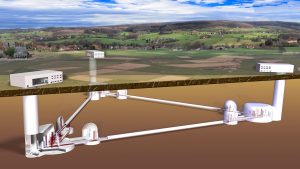
The laws of the Universe
Scientists embracing the LHC and CERN future research programme are motivated by understanding the origin of everything and this is exactly the same motivation for many different researchers who are alternatively conducting their investigations through new generation large instruments dedicated to the observation of the cosmos. They exploit high-energy cosmic ‘messengers’, including particles, electromagnetic radiation and gravitational waves to infer insights on how Universe functions, on fundamental laws of nature, governed by the mysterious union of space–time and quantum mechanics. For example, collisions of black holes or neutron stars and supernovae explosions, could shed light on open questions such as the nature of dark matter, the limits of the validity of general relativity and the behaviour of matter at extreme densities and pressures. These are topics of the currently in operation gravitational wave interferometers such as LIGO and Virgo, and among the main objectives of the next generation and more sensitive European project called Einstein Telescope (ET).
A great number of new generation young experimentalists look forward to deeply understanding the Higgs, as well as exploring and combining together the energy and space-time frontiers. The last JENAS international conference that brought together nuclear, particle and astro-particle physics communities, had the aim of structuring such a vision. Expressions of interests and initiatives in support of transversal scientific federated efforts on topics such as dark matter studies and extreme universe investigation as well as on technology R&D were discussed.
“One of the pillars of today’s Open-Science policy is the expectation from scientific communities to accelerate the discoveries and increase scientific value by sharing data and by transferring knowledge among scientists. In my perspective, a clear structuring initiative is needed. Scientists need to have a reference environment where feeding their intellectual curiosity, debating together within a cross-domains context and without limiting themselves to exploit and serve one single instrument, however big it is, collectively participate in advancing our knowledge of the Universe, interoperating data, combining together the multi-probe approach (particles and cosmos) for a renewed science mission”, said Lamanna. “I would leverage CERN to become such a scientific inclusive reference environment”.
The FCC preparatory study scheme with all its core and annex aforementioned expected impacts and challenges is similarly applicable to all next generation Big-Science projects. They are all concerned by a three fold plan: -R&D and innovation; -governance and management; -and societal engagement. In all of them, synergies should be considered, and repetitions should be avoided in order to minimise the risks of delays in acceptance and contain the costs for common benefit.
In terms of R&D, a flow of knowledge and co-operative actions between CERN and other projects take place traditionally in many fields (such as detectors, microelectronics, and computing). Today, for instance, the future ET interferometer is designed to be built at 200m underground, its mirrors have to operate in cryogenic conditions to reduce thermal disturbance. During its preparatory phase, collaboration between ET and FCC in the context of civil engineering, cryogeny and the way to establish long-term industrial co-operative schemes, needs to be supported. Similar considerations are applicable to justify and build structured formal co-operation between CERN based projects (such as HL-LHC and FCC) and all other physics projects concerned by the same extended scientific community.
Establishing the next generation of complex facilities in both particle and astro-particle physics requires similar management and administrative sound procedures. Any Big Science project needs an organisation with legal capacity in order to guarantee the management layer during the construction phase, to take full responsibility of operations and of further upgrading. Although consortia of scientists from national institutes should always have a prominent role when designing and building their project and in particular during the exploitation of the project’s results. Scientists often plan the establishment of intergovernmental treaty organisations (such as ERIC). However, establishing a legal entity should not necessarily imply reinventing management rules, practices and multiplying administrative offices. Current organisations such as ESO and CERN should be formally leveraged to guarantee some operative and support missions. This is what the CTA Observatory is doing by assigning the construction and operation of its southern array of telescopes to ESO. AMS is a NASA project that has been successfully supported and managed at CERN.
Finally, the societal engagement of scientific collaborations is a multi-facet issue. Very similarly to the case of FCC, a forward-looking unifying approach is nowadays demanded during the early preparatory phase of any new research project. “The central role of science and international research collaborations in the society is to establish a new alliance in Europe aimed at addressing annexed but critical issues such as training, innovation, the circular economy, energy efficiency, climate changes, sociological and health threats, and global geopolitical diplomacy,” says Lamanna.
“My personal view is that also for the societal engagement we need more co-operation, co-ordination and unified approach for more incisiveness. Researchers in physics have a role to play and they should look at CERN as our mother house more than in the past. It is time that European scientists, citizens, and political leaders build a new foundation for co-operation in scientific research. I personally plead the case of a renewed resolution to be adopted concerning the establishment of a European Council for Fundamental Research, enlarging the scientific mission of CERN in Europe and internationally.”
Dr Giovanni Lamanna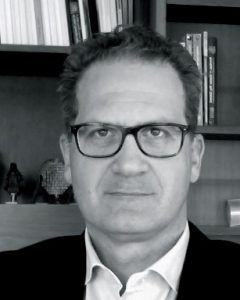
Director
Laboratoire d’Annecy de Physique des Particules
+33 4 50 09 16 01
Giovanni.Lamanna@lapp.in2p3.fr
https://lapp.in2p3.fr/
Please note, this article will also appear in the second edition of our new quarterly publication.

